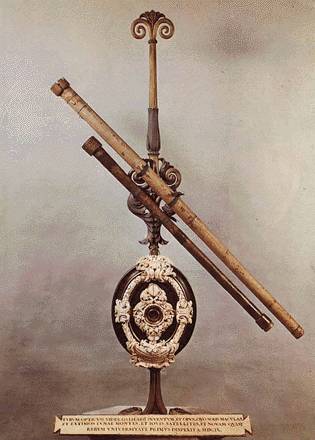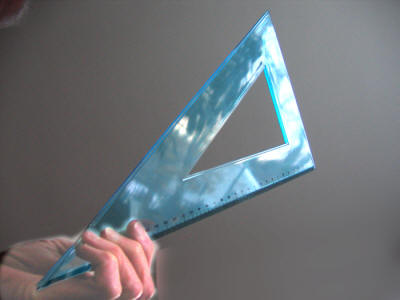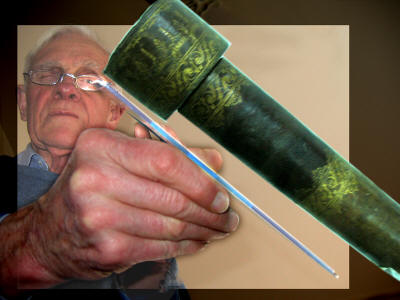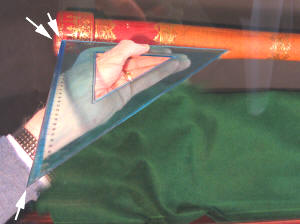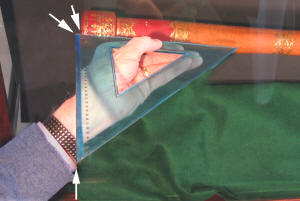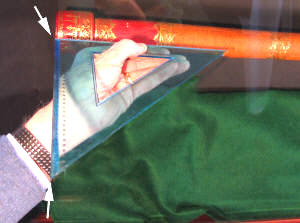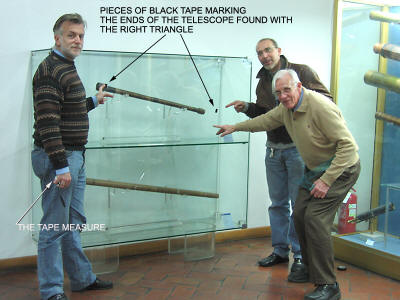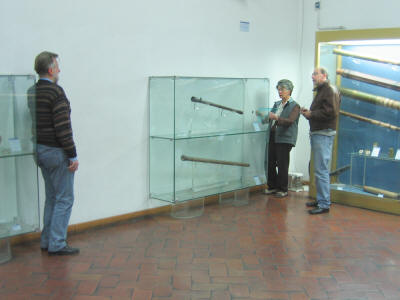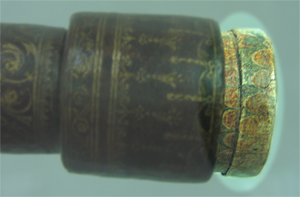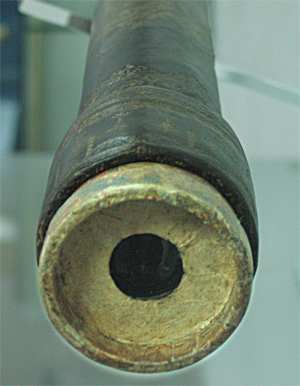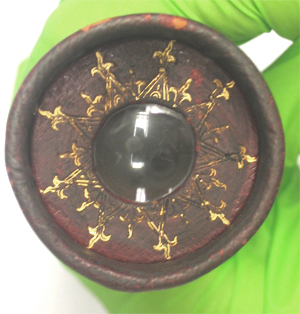|
Galileo's Original Telescopes: New
measurements of their dimensions with special
optical rulers. |
Galileo's Telescopes: To Date These Are The Worlds
Finest Museum Quality Replicas
Made to Order by
Jim &
Rhoda Morris
|
Jim & Rhoda Morris 781 245 2897 K1ugm@comcast.net |
Antiques-Sci-Tech.com |
|
We have built a number of these very fine replicas for the the IMSS in Florence Italy, Griffith Observatory, the Adler Planetarium, and President L. B. Johnson's Library and Museum in Austin, TX. A number, in various configurations, of our replica's IMSS inv #2427 and 2428 were on the exhibit at Beijing Planetarium and are now at the Franklin institute in Philadelphia. We were able to successfully make them to high standard of accuracy after spending a significant amount of research of the literature and making measurements of these instruments using some interesting techniques that we developed for this task An issue in
dimensions and the solution; These errors were too large to be ignored in building and using our replicas. It was clear that the lengths and diameters of the various components had to be checked out with new measurements. So with the help of Dr. Giorgio Strano - Curator and the staff at the IMSS we made measurement of the instrument on a number of visits to the IMSS for both the IMSS 2427 and 2428 telescopes. Our measurements did show clearly that both telescopes were considerably shorter than reported. The methods that we employed are discussed below along with the the current dimensions of both telescopes In addition to our work and impart as a result of our work; . IMSS on (12/4/2008) made new and more accurate measurements of the length of both telescopes The new lengths for IMSS inventory 2427 is (1273 mm not 1360mm) and IMSS inventory 2428 is (927mm. not 980mm). This is very good news for all of us especially those that build models of these famous telescope. We all appreciate the very careful and good work done by the staff at the IMSS. These new data are reported on their very
wonderful and lively
web sites. Again thank you IMSS for your good work it is so very helpful. to all
of us. and a wonderful example of scientist working together to achieve the best
data. for our and others projects to replicate these instruments.
On our trips to the IMSS we took up the challenge to make our measurements of the original instruments through the display case windows in the exhibit hall before normal exhibit hours.
The windows of the display case are of adequate optical quality to make useful optical measurements. For
these measurements we designed and built our own special portable optical rulers which are
described below. We compiled two sets of data, one in 2005, using a single telescope on a substantial
tripod, the second in 2007, using two microscopes connected to a rail and ruler. A pictorial
description is presented below for both techniques. A comparison of the two sets of data showed an agreement
to within + or - 3 mm. Length Measurements |
||
|
Below Rhoda, Jim and the staff at the IMSS, July 2007, reviewing and comparing the data in the literature and records on the lengths of IMSS 2427 & 2428 telescopes.
|
||
| In July 2007 we repeated
and re-checked our earlier measurements for the dimensions of the 2427 & 2428
telescopes at the IMSS with new equipment. We found that both of our data
sets are in good agreement and they continue to show serious
inconsistencies with those in the
literature.
|
||
|
The July 2007 repetition of our original 2005 measurements of the length of the Galileo's original telescopes using a new version of our optical ruler designed especially for this task of making the measurements from outside their cabinets. The optical ruler is composed of two microscopes with cross hairs. One microscope views the left hand side of the telescope the other the right side. They are connected with a centimeter scale. Below are some photographs of the equipment and measurement process.
|
||
 |
||
| Above: the cabinets containing the Galileo IMSS 2427 and 2428 telescopes with Rhoda and Jim literally on their knees measuring the length of IMSS 2427. | ||
 |
||
| Above is the eye piece side of our optical ruler with their sliding focus tubes, one was used to view the left side of the telescope the other use to view the right end of the telescope. Their fiducial cross hairs were used to register the microscopes to the ends of the telescope. They are connected with a scale to make the length measurements. | ||
 |
||
| The above photo shows the telescope side of the optical ruler. It uses two low power microscopes with cross hairs. The microscopes are pressed firmly to the glass of the cabinet making them perpendicular to the cabinet. |
